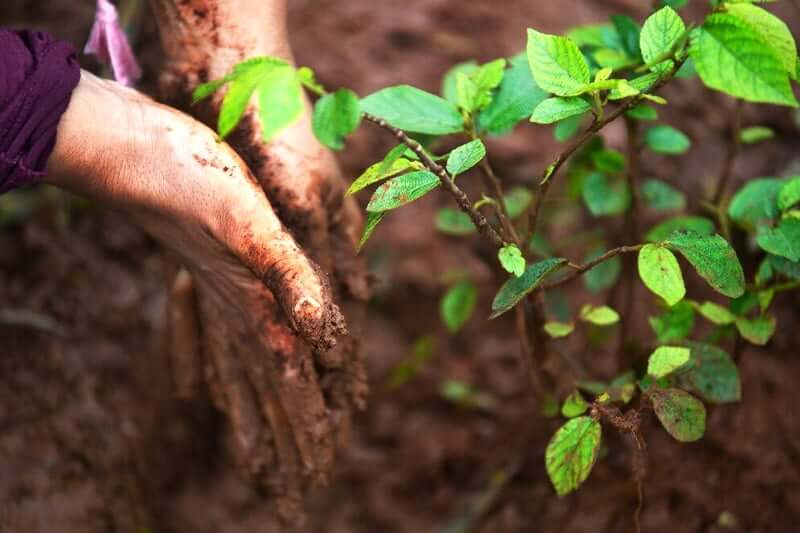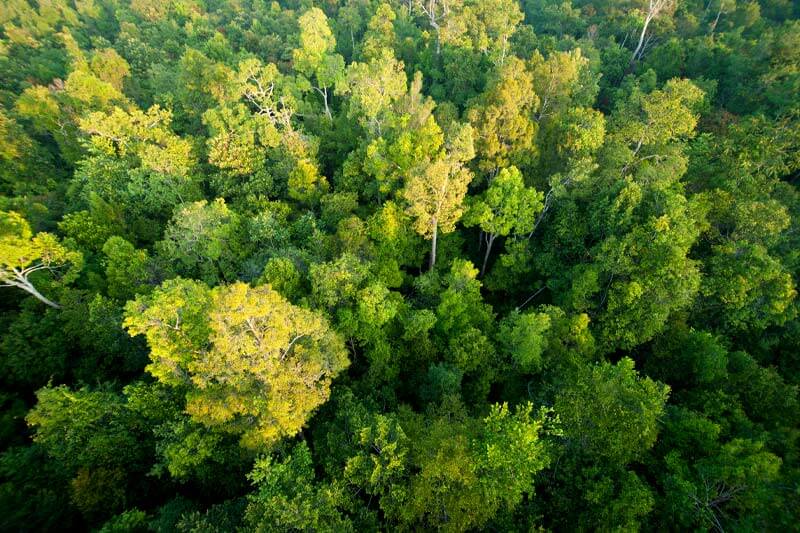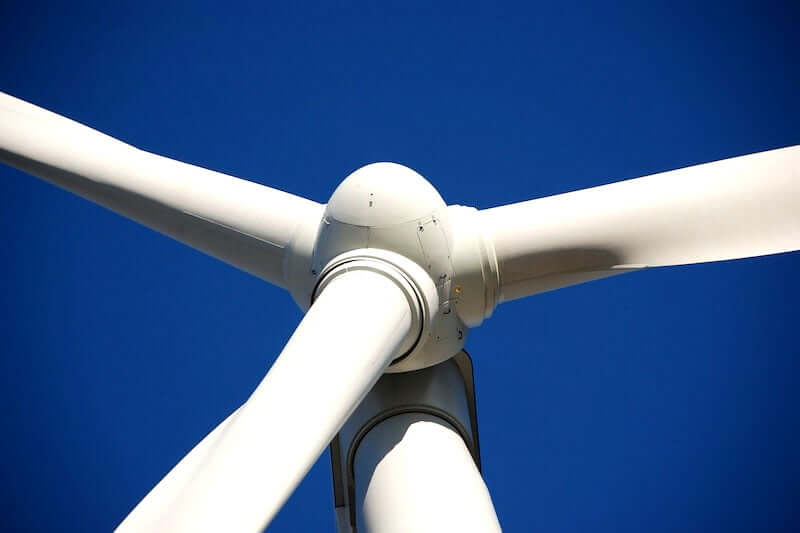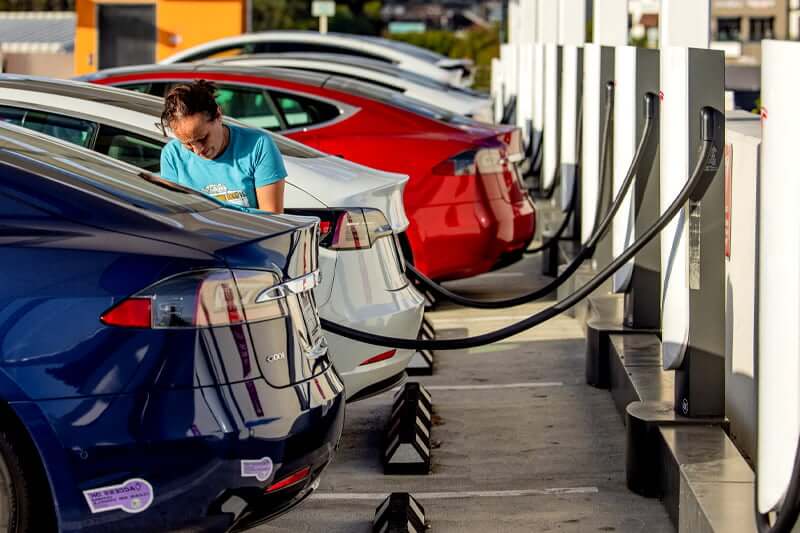Have you ever considered the process of carbon offsetting? Numerous strategies exist, but tree planting stands out as a particularly common and effective approach. On average, a single tree can capture about 1 metric ton of carbon during its initial 40-50 years, a significant amount that becomes even more impactful if the tree survives for centuries.
Planting trees is one of the most effective ways to offset carbon and reduce the greenhouse effect. However, plants and trees alone offset all the carbon being produced.
While there are other emerging means of offsetting carbon, this article shows how effective trees are in storing carbon, how dependable tree planting is for carbon offsets, and whether or not planting trees can offset carbon!
What we cover
ToggleWhat is carbon offset?
A carbon offset is a reduction or removal of CO2 or other greenhouse gas emissions produced to compensate for emissions made elsewhere. Offsets are quantified in tons of CO2-equivalent (CO2e). One ton of carbon offset signifies the decrease or elimination of one ton of CO2 or its equivalent in other greenhouse gasses.
How does carbon offset work?
Carbon offsets function by capturing or trapping carbon dioxide through systems with measured CO2-absorbing capacity.
Carbon is often sequenced organically, with trees now being the best method because they take up CO2 for photosynthesis. Offsetting can also be done by protecting forests, although this is significantly more challenging because the trees already exist under these conditions.
Planting trees creates new carbon stores that can be very effective if done properly. However, there are some other methods as well that reduce the emissions like cultivating crops, farmers use technology and strategies to optimize resources and minimize waste which also helps in carbon offsetting.
A sustainability strategy can be developed once an organization has measured its emissions and identified the sources. The Science Based Target project provides precise guidelines for lowering emissions. Although trees play a major role in this. Let’s see how they work.
How does planting trees offset carbon?
To some extent, all plants eliminate carbon. Because of their ability to store carbon, trees are referred to as “carbon sinks.” This is accomplished by a mechanism known as photosynthesis.
Trees absorb carbon dioxide through their leaves and convert it into sugars that they need to grow. As the tree grows, it is able to store carbon in its branches, roots, and trunk, helping to mitigate the consequences of global warming.
However, woody perennials, such as trees, are especially useful because they can store carbon in the form of cellulose (wood) for hundreds of years. As trees mature, their roots help to store carbon in the soil. According to the USDA Forest Service, American forests and harvested wood currently absorb more than 14% of US carbon emissions each year.
While trees mostly absorb carbon from the atmosphere, they also emit carbon dioxide as they die and disintegrate. Monitoring this natural cycle to improve carbon capture is part of responsible forest management.
Trees help to mitigate the consequences of climate change in a variety of ways:
- Forest carbon capture
- Photosynthesis stores carbon in forest soils or processed wood products.
- The use of wood as an energy source instead of fossil fuels.
- The use of less energy-intensive materials such as aluminum or PVC in place of more energy-intensive ones.
How much carbon trees can actually capture?
Based on the species and location, different types of trees absorb different quantities of carbon. A normal hardwood tree absorbs roughly 20 kilograms (about 50 pounds) of CO2 per year on average, with variations depending on the age of the tree and where it is placed.
At this pace, each tree sequesters around 1 metric ton of carbon in the first 40-50 years of its existence, which is very significant, especially if the tree can survive for hundreds of years — and is part of a bigger forest of planted trees that all take in the same amount of CO2.
Can trees reduce carbon completely at this pace?
Not Completely. Human activities currently emit approximately 40 billion metric tons of CO2 every year. So, at our current rate, we would need to plant 40 billion trees every year to offset our total annual emissions.
This would be nearly impossible because, in addition to the logistical difficulties of planting so many trees, we would actually run out of space after only a few years of planting tens of billions of seedlings.
Thankfully, we have the potential to reduce our annual emissions from 40 billion metric tons to something more acceptable — and we can do so through a variety of offsets other than planting trees.
Carbon sequestration and forests
According to our carbon computation approach, the first 20 years of tree growth result in 4.5 to 40.7 tons of CO2 eliminated per year per hectare.
The rate of elimination varies according to the location and type of forest, and the statistic is calculated on a surface rather than a tree basis. This is an excellent method since forests are made up of a variety of trees.
Moreover, the trees planted during a restoration effort may not be the same trees that are present 20 years later – some trees will die of natural causes, and some trees may regenerate naturally from seed in the soil or brought in by the wind or animals.
What trees best sequester carbon?
Deciduous trees and evergreens are some of the best trees to absorb atmospheric carbon. Because their wood is denser, deciduous trees, such as oak, are generally better at storing carbon than coniferous trees – but there are limits. Among evergreens, Douglas Fir, Ponderosa Pine, and Redwoods stand out, but other species like London Plane, Teak, and Eucalyptus have also proven to be useful.
Do we need to plant more trees?
So we just need to plant more trees, right? Sadly, it is not that easy. While regeneration is an important component of an effective climate change mitigation strategy, it is crucial to recognize that simply planting trees will not solve the climate challenge.
Forest protection, decreasing emissions, and promoting planetary health are all equally vital. It’s all linked, and we should all be doing everything we can to cut our collective global greenhouse gas emissions.
Critics have already pointed out the reasons why only plants cannot change the overall climate change. So let’s get into that part.
Are plants always a good sustainability strategy?
- To be honest, planting trees is not a miraculous solution to tackle global warming. Given the extent of our carbon dioxide emissions, the reforestation efforts required to offset our emissions using trees would be far too enormous, and as a result, planting tree programmes are unable to meet CO2 capture standards.
- Many reforestation efforts are poorly designed and consist of planting monocultures in inappropriate environments, which end up doing more harm than good by introducing invasive species or competing for water with other trees.
- Because creating the illusion that planting trees is a relevant and successful way to offset greenhouse gas emissions and combat climate change leads to private and public actors doing it for their own brand building.
- We see them claiming to be acting to protect the environment when, in fact, they frequently bet on deceptive carbon offsetting programmes while the true sources of emissions – which come from supply and operation chains – continue to operate and pollute as usual.
- As a result, many firms and people currently use tree planting as an alibi to claim they are “carbon neutral,” “zero emissions,” or even “zero impact” using carbon accounting sleight of hand.
- Plants can not erase the real background issue, other factors come into play where we humans need to cut down the carbon at the source.
What are some of the most common carbon offsetting methods?
In addition to tree planting, developing synthetic carbon capture devices and other direct carbon capture methods are becoming more common. To varying degrees, four major types of offsetting are now being used.
Here are four main types of offsetting methods:
Most famous one: planting trees
This has always been the most effective strategy to remove carbon from the atmosphere and counteract huge amounts of CO2. It’s what trees do: absorb CO2 for photosynthesis. Although planting trees for climate change is not without disadvantages, the pros generally far outweigh the cons if done correctly.
We now know how much carbon they absorb on average and which trees absorb the most CO2 over a given period. This enables a good calculation of the amount of CO2 that can be offset based on the number of trees planted. For this and many other reasons, tree planting remains the best form of carbon offset.

Next popular offsetting: forest conservation
This is an excellent technique to store a large amount of carbon while assisting societies with valuable forest resources that do not wish to develop. It is unclear when the idea of compensating wooded areas in exchange for them refraining from cutting down trees arose.
Because old-growth forests absorb more CO2 than newly planted trees, this offset type is more effective per acre than planting. Preserving trees, particularly tropical forests, sequesters CO2 maintains biodiversity, and keeps our planet’s biological processes in check.
Resource: How to plant a tree: New Guide

Less common: carbon avoidance
This is a new sort of offset that is not widely used yet, but it will become much more common in the next few years. It entails modifying behavior to keep carbon from entering the atmosphere and then creating offsets from this.
There are other options, such as the African movement to replace wood-burning stoves with renewable methanol cookstoves. These types of projects generate offsets from the saved emissions provided by new technologies.

Rise of CCUS industrial applications
What we do have is a large range of CCUS (carbon capture, storage, and utilization) alternatives that may be fitted or modified to systems that cannot be carbon-free by nature, such as fossil fuel combustion.
What can be done is to trap the carbon emitted by these activities and store it in solid form, or to use it to make other goods so that the carbon remains in the ground rather than being released into the atmosphere.
There are also some fascinating new applications emerging from this, such as concrete that retains CO2 permanently held in a solid state within blocks — and the CO2 actually strengthens the concrete due to the links it forms.

Other ways to reduce emission
Individual actions, such as moving to a more sustainable diet or switching to greener transportation, such as electric automobiles and trains with hybrid locomotives, can help reduce carbon emissions in minor ways. Another big one is to install solar panels in your home.
Emissions that cannot be eliminated can be compensated for. Carbon dioxide reduction projects absorb or eliminate carbon dioxide. To provide carbon credits, a project must be certified.
The following are some examples of international certifications:
- Plan Vivo
- Gold Standard
- Climate Action Reserve
Aviation. Airlines use artificial intelligence to optimize flight trajectories to reduce contrail cloud formation.
Renewable energy sources. Clean, renewable energy, such as that provided by a wind farm, is used instead of fossil fuels in these projects.
Management of water. Projects bring clean water to locations where it is dirty or unavailable.





